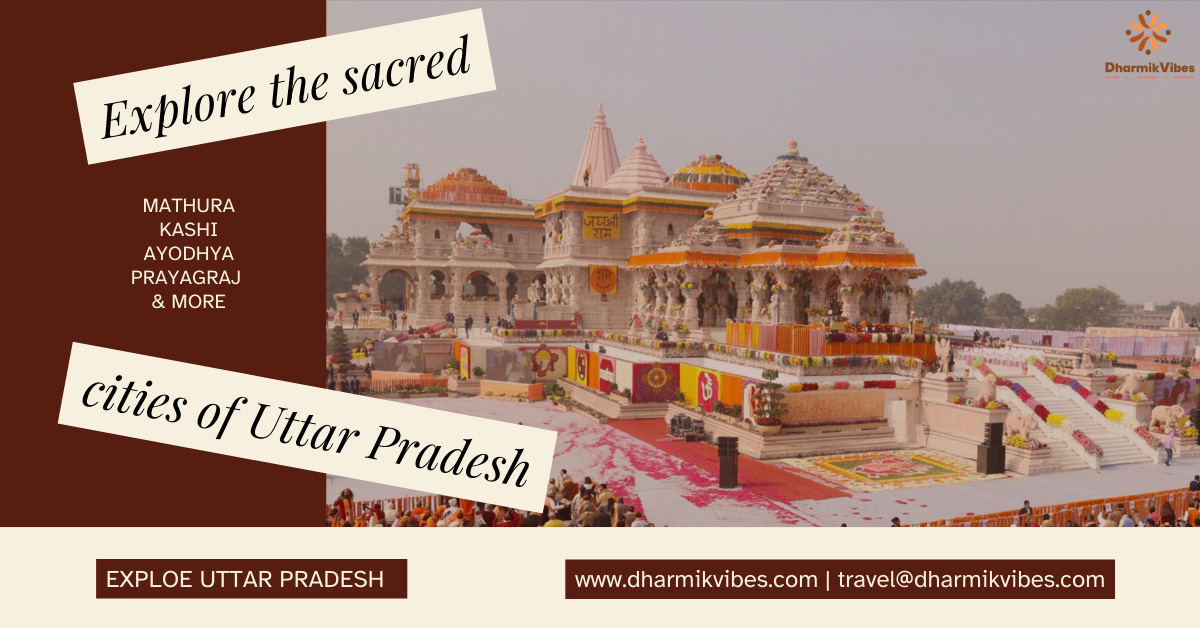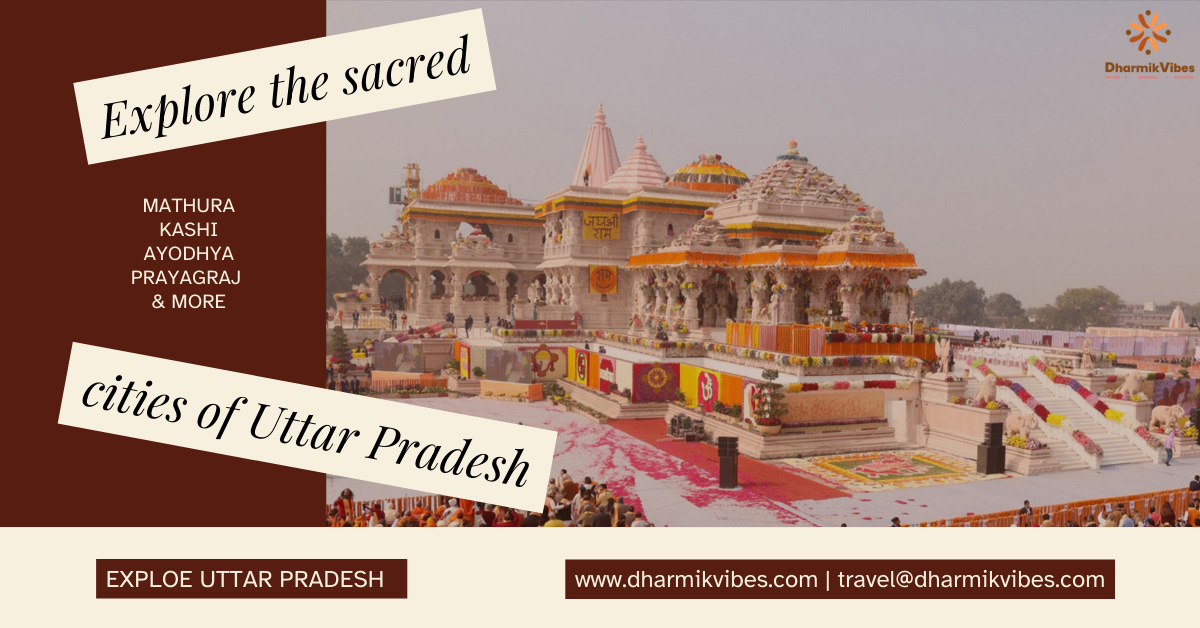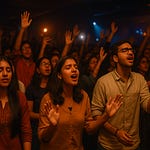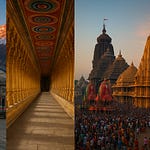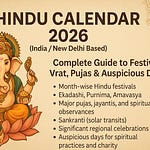Uttar Pradesh is not only defined by its famous cities such as Varanasi, Prayagraj, Mathura, and Vrindavan. Beyond these well‑traveled centers lie towns and villages where ancient legends, rituals, and festivals continue to thrive with an unfiltered, local flavor. In this part, we shine a light on these spiritual outposts that form the backbone of Uttar Pradesh’s devotional tapestry.
1. Sorro (Near Etah)
Historical and Spiritual Significance:
Sorro, a modest town near Etah, is a perfect example of how spiritual heritage permeates even the less‑publicized corners of Uttar Pradesh. Often visited by locals and regional pilgrims, Sorro is known for its serene ambience and longstanding traditions that have been handed down through generations.
Key Attractions and Temples:
Local Temples: Several ancient temples in Sorro—dedicated to deities like Lord Shiva, Goddess Durga, and local incarnations of folk deities—serve as centers for daily worship and seasonal festivities. These temples, though modest in scale compared to tier‑1 shrines, are architecturally significant with carved idols, intricate stone work, and murals depicting local legends.
Ritual Practices:
Daily pujas and aartis are performed by resident priests who have often inherited their roles over several generations.
Seasonal fairs and celebrations during festivals like Navaratri and Diwali see the town come alive with traditional music, dance, and local cuisine.
Festivals and Community Events:
Local Melas: During major Hindu festivals, Sorro hosts melas (fairs) that blend religious devotion with local traditions.
Cultural Programs: Traditional folk performances, recitations of local epics, and devotional music sessions highlight the community’s commitment to preserving its spiritual legacy.
2. Chitrakoot
Historical and Spiritual Significance:
Chitrakoot is a town steeped in mythology, renowned for its association with Lord Rama’s exile. The ancient narratives of the Ramayana come to life here, as it is believed that Rama, Sita, and Lakshmana spent several years in the dense forests of Chitrakoot.
Key Attractions and Temples:
Ram Ghat and Hanuman Dhara:
The sacred Ram Ghat, where pilgrims take ritual baths, is said to be blessed by Lord Rama himself.
Hanuman Dhara is a waterfall where devotees believe that Lord Hanuman once blessed Rama.
Ashrams and Temples:
Numerous ashrams dedicated to the Ramayana saints and sages dot the region. These serve as centers of meditation, scriptural study, and spiritual discourse.
Ancient Shrines:
Temples dedicated to various deities, including Rama, Lakshmana, and Sita, stand as silent witnesses to centuries of devotion. Many of these temples boast intricate carvings and ancient inscriptions that narrate episodes from the Ramayana.
Festivals and Rituals:
Ram Navami: Chitrakoot hosts grand celebrations on Ram Navami, marked by processions, recitations of the Ramayana, and communal feasts.
Diwali and Dussehra: Ritual enactments (Ramlila) and ceremonial lights add to the festive spirit, with local artisans and performers playing a significant role in the celebrations.
Seasonal Fairs: These gatherings not only offer spiritual enrichment but also serve as a platform for local traders and craftsmen, bridging the gap between faith and folk culture.
3. Sravasti
Historical and Spiritual Significance:
Sravasti holds a unique place in the tapestry of ancient Indian spirituality. Known both for its mentions in Hindu scriptures and for its significance in Buddhist tradition, Sravasti is a multi‑layered spiritual site. For Hindus, it is renowned as a seat of learning and asceticism, and its association with ancient sages adds to its mystique.
Key Attractions and Temples:
Ancient Ashrams and Viharas:
Several ruins and active ashrams mark the site, providing a glimpse into its past as a center for philosophical debate and spiritual inquiry.
Local Temples:
Temples in Sravasti are dedicated to a variety of deities, with some featuring a blend of Hindu and Buddhist iconography that testifies to the historical syncretism of the region.
Sacred Groves and Water Bodies:
Scattered ponds and groves, often regarded as abodes of divine energy, are integral to the local belief systems. These natural sites are often the venue for small-scale rituals and community prayers.
Festivals and Rituals:
Annual Religious Gatherings: Sravasti hosts regional fairs where religious discourses, devotional music, and traditional dance performances are integral parts of the celebrations.
Scriptural Recitations: Regular satsangs (spiritual gatherings) are held, where local scholars and priests recite ancient texts and share interpretations that have been passed down orally for centuries.
4. Gorakhpur
Historical and Spiritual Significance:
Gorakhpur is synonymous with the Nath tradition and is most famous for the revered Gorakhnath Temple. The city has been a stronghold of yogic and ascetic practices, where the teachings of Guru Gorakhnath have influenced generations of devotees.
Key Attractions and Temples:
Gorakhnath Temple:
The temple is an imposing structure that attracts pilgrims from all over India. Its architecture reflects a blend of medieval and local styles, and it is famous for the spiritual discipline and strict codes of conduct maintained by its resident ascetics.
Ashrams and Meditation Centers:
Gorakhpur is dotted with ashrams and centers dedicated to the Nath tradition. These institutions offer courses in yoga, meditation, and spiritual counseling.
Local Shrines:
Several smaller shrines and devotional sites, often nestled in the city’s quieter neighborhoods, serve as local centers for worship and community gatherings.
Festivals and Rituals:
Guru Gorakhnath Jayanti: This day is celebrated with immense fervor, with processions, special pujas, and discourses that recount the life and teachings of Guru Gorakhnath.
Daily Rituals: The temple sees a continuous flow of rituals—from early morning meditations and abhishekams (ritual bathing of the deity) to evening aartis and kirtans.
Cultural Fairs: Local melas during major festivals also display traditional music, dance, and handicrafts, reinforcing Gorakhpur’s status as a center of spiritual and cultural heritage.
5. Bareilly
Historical and Spiritual Significance:
Bareilly, though less internationally known than some of its neighbors, boasts a rich spiritual tradition and has been home to various sampradayas (religious orders). The city has long served as a melting pot of various devotional practices and houses numerous shrines that celebrate both classical and regional deities.
Key Attractions and Temples:
Local Mandirs:
Numerous temples in Bareilly are dedicated to deities such as Lord Shiva, Goddess Durga, and local forms of Krishna. These temples are centers for both ritual worship and community events.
Cultural Centers:
In addition to temples, Bareilly is home to several cultural institutions that promote classical music, dance, and traditional arts that are often performed during religious festivals.
Architectural Highlights:
Many of Bareilly’s temples feature intricate stone carvings and frescoes that reflect the local artistic traditions, blending indigenous styles with influences from larger regional artistic movements.
Festivals and Rituals:
Local Celebrations: Festivals like Navaratri, Diwali, and Holi are celebrated with regional variations, often incorporating local folk dances, traditional music, and artisanal food markets.
Community Worship: Daily rituals and seasonal fairs act as gathering points for devotees and serve as a medium for passing down religious traditions to younger generations.
6. Other Notable Tier‑2 and Tier‑3 Destinations
Beyond the aforementioned towns, Uttar Pradesh is dotted with several other sacred sites that, while perhaps lesser‑known on the national stage, are indispensable to the spiritual fabric of the state:
a. Deogarh (near Agra)
Spiritual Heritage:
Deogarh is known for its ancient temples and shrines, some of which date back to the early medieval period. The temples here are notable for their unique architecture and the blend of regional artistic styles.Key Sites:
Temples dedicated to local deities and incarnations of mainstream Hindu gods, often set against the backdrop of serene natural landscapes.
Rituals:
Traditional pujas, annual fairs, and pilgrimages that attract local devotees.
b. Farrukhabad and Budaun
Spiritual Heritage:
These cities have historically been centers of religious learning and local devotion.Key Sites:
Temples and dargahs co‑existing side‑by‑side, highlighting the syncretic nature of Uttar Pradesh’s religious culture.
Festivals and Rituals:
Local melas, community satsangs, and inter‑faith gatherings that underscore the region’s diverse devotional practices.
c. Rampur and Moradabad
Spiritual Heritage:
While often recognized for their cultural heritage and handicrafts, these cities also house ancient temples and local shrines that continue to serve as centers of devotion.Key Sites:
Shrines dedicated to various deities and saintly figures, often celebrated in local lore.
Festivals and Rituals:
Community gatherings and regional festivals that include religious processions, devotional music, and local culinary traditions.
d. Basti and Siddharthnagar
Spiritual Heritage:
These smaller districts are home to rural tirths where ancient legends persist in the daily lives of local communities.Key Sites:
Numerous small temples, sacred groves, and water bodies revered as divine abodes.
Rituals:
Daily worship practices, local fairs, and seasonal rituals that continue to celebrate traditional forms of devotion.
The Rich Tapestry of Local Festivals and Rituals
Across tier‑2 and tier‑3 regions, the religious life of Uttar Pradesh is characterized by an unyielding commitment to preserving age‑old traditions. Here, the festivals and rituals are not mere annual events—they are living expressions of a collective faith that binds communities together. Some notable features include:
1. Seasonal Fairs and Melas
Local Melas:
Every village or small town typically hosts seasonal fairs where religious rituals are interwoven with local entertainment, folk performances, and artisanal bazaars. These gatherings offer a glimpse into the local culture and provide opportunities for religious learning and community bonding.Cultural Exchange:
Such events are often a confluence of different traditions, reflecting how local devotional practices adapt and integrate diverse influences—from classical Sanskritic recitations to regional folk songs.
2. Ritualistic Practices in Rural Tirths
Daily Worship:
In many small towns, daily rituals such as morning aartis, evening pujas, and communal bhajans are conducted with fervor. These practices are often centered around local deities whose legends have been passed down orally for centuries.Pilgrimage on a Local Scale:
Even if the town is not widely known outside the region, a pilgrimage here is an intimate experience. Devotees perform circumambulations, ritual baths in local ponds or streams, and sometimes even night vigils as acts of deep personal devotion.
3. Local Interpretations of Pan‑Indian Festivals
Adaptation and Syncretism:
Festivals like Holi, Diwali, and Navaratri are celebrated with the same overarching spirit as in tier‑1 cities, but local customs and regional folklore add unique flavors to the celebrations. For instance, the Holi celebrations in a rural tirth might involve traditional folk dances, regional culinary specialties, and community plays that reenact local versions of mythological tales.Inclusive Celebrations:
In many tier‑2 and tier‑3 areas, the festivities often blend various faith traditions, highlighting Uttar Pradesh’s history of religious coexistence and the sharing of devotional expressions between different communities.
Architectural and Artistic Traditions in Local Tirths
The smaller religious centers of Uttar Pradesh boast a rich array of architectural and artistic expressions that, though modest in scale, are deeply evocative of the region’s cultural heritage:
Local Temple Architecture:
Many temples in these areas are built in a style that reflects local materials, climate, and artisan techniques. Simple yet elegant, these structures often feature stone carvings, terracotta murals, and wooden sculptures that tell stories of ancient gods and local legends.Preservation of Oral Traditions:
In the absence of grand stone inscriptions, oral traditions have played a vital role in preserving the histories and rituals associated with these sacred places. Local bards, storytellers, and temple priests are the custodians of centuries‑old lore.Integration with the Natural Landscape:
Numerous temples and shrines in rural Uttar Pradesh are built amidst natural settings—on riverbanks, beneath ancient trees, or atop small hills—blurring the lines between the divine, nature, and human creativity.
In this second installment of our comprehensive religious map of Uttar Pradesh, we have uncovered the vibrant spirituality that thrives beyond the well‑known pilgrimage centers. From the tranquil environs of Sorro near Etah to the mythic narratives of Chitrakoot, the ancient wisdom of Sravasti, and the enduring traditions of Gorakhpur, Bareilly, and beyond, each locale contributes uniquely to the state’s rich devotional tapestry.
These tier‑2 and tier‑3 sacred places are not merely stops on a pilgrimage route—they are living, breathing communities where the divine is encountered in everyday life. The festivals, rituals, local arts, and community practices of these regions provide insights into the resilience and continuity of Uttar Pradesh’s spiritual heritage.
As we prepare to move on to Part 3 of our series—where we will explore the even more remote and lesser‑known rural tirths (tier‑4, tier‑5, and beyond), along with in‑depth profiles of local traditions, personal narratives, and a closer look at the integration of modernity with ancient rituals—this chapter stands as a testament to the depth and diversity of religious life in Uttar Pradesh.
Stay tuned as we continue our journey, unraveling more hidden stories and sacred sites that together create a complete religious map of this spiritual heartland.
Uttar Pradesh Religious Series Part 3: Rural Tirths and Lesser-Known Sacred Places of Uttar Pradesh
Uttar Pradesh’s spiritual landscape is not confined to the bustling cities and renowned pilgrimage hubs. Scattered across its vast rural expanse are countless temples, shrines, sacred groves, and water bodies that have been revered by local communities for generations. In this section, we explore these remote and often underappreciated tirths—places whe…
Uttar Pradesh Series: A Spiritual Tapestry of Tirth, Temples, & Timeless Traditions: A Comprehensive Religious Map
Uttar Pradesh Religious Map & its history is divided in to 6 Parts.


